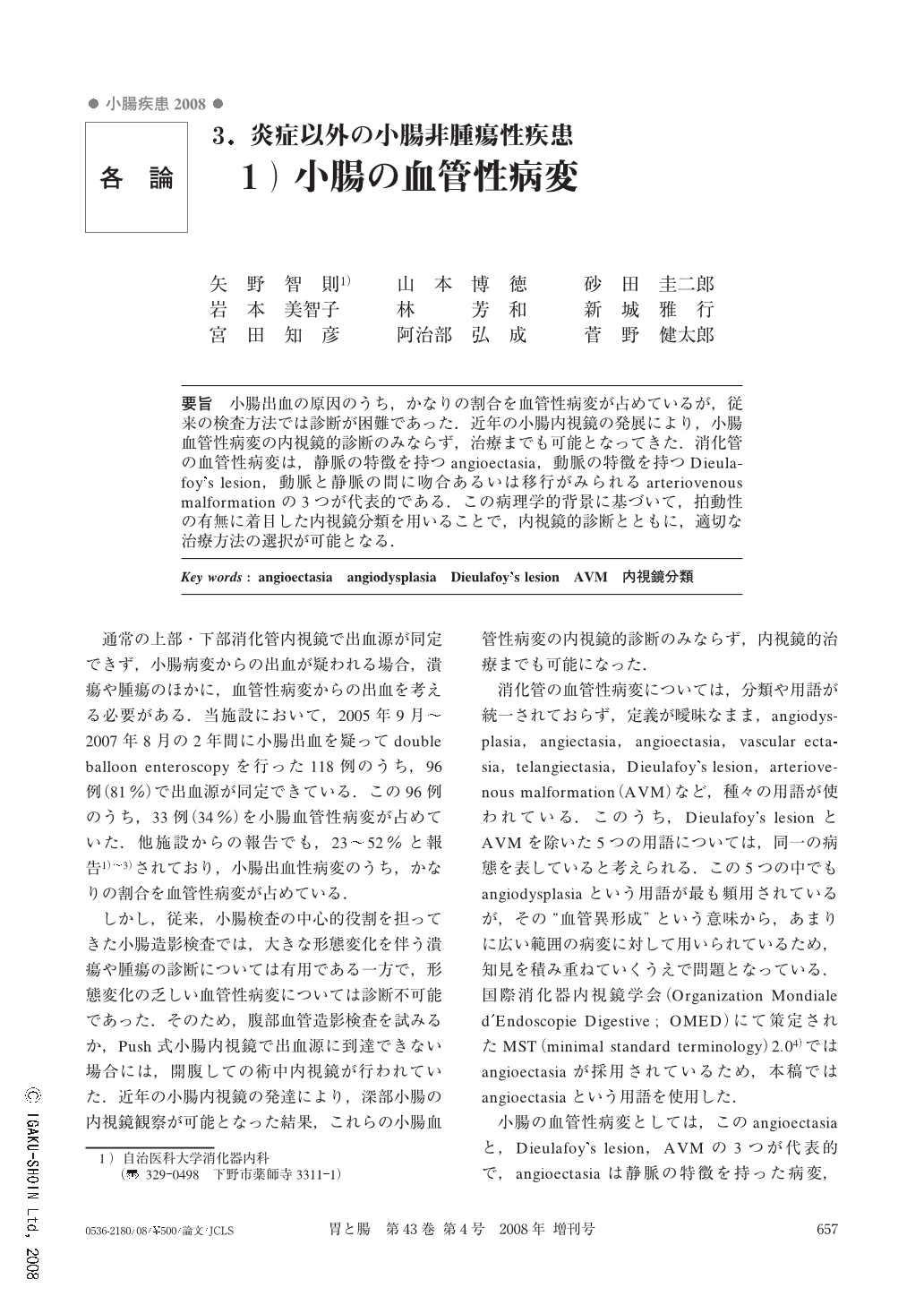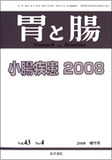Japanese
English
- 有料閲覧
- Abstract 文献概要
- 1ページ目 Look Inside
- 参考文献 Reference
- サイト内被引用 Cited by
要旨 小腸出血の原因のうち,かなりの割合を血管性病変が占めているが,従来の検査方法では診断が困難であった.近年の小腸内視鏡の発展により,小腸血管性病変の内視鏡的診断のみならず,治療までも可能となってきた.消化管の血管性病変は,静脈の特徴を持つangioectasia,動脈の特徴を持つDieulafoy's lesion,動脈と静脈の間に吻合あるいは移行がみられるarteriovenous malformationの3つが代表的である.この病理学的背景に基づいて,拍動性の有無に着目した内視鏡分類を用いることで,内視鏡的診断とともに,適切な治療方法の選択が可能となる.
Although small-intestinal vascular lesions can't be diagnosed by barium study, they were the bleeding source in a large percentage of patients with Mid-GI-bleeding. The progress of enteroscopy has been changing the diagnostic and therapeutic algorithm for these vascular lesions. There are 3 pathological conditions of vascular lesions. Angioectasia is characterized by venous/capillary lesions, Dieulafoy's lesion is characterized by arterial lesions, and AVM is a condition in which arteries and veins are directly connected without capillary beds. We classified vascular lesions with consideration of the presence or absence of pulsatility. The presence or absence of arterial components provides important information in understanding the pathological conditions and in selecting endoscopic treatment.

Copyright © 2008, Igaku-Shoin Ltd. All rights reserved.


